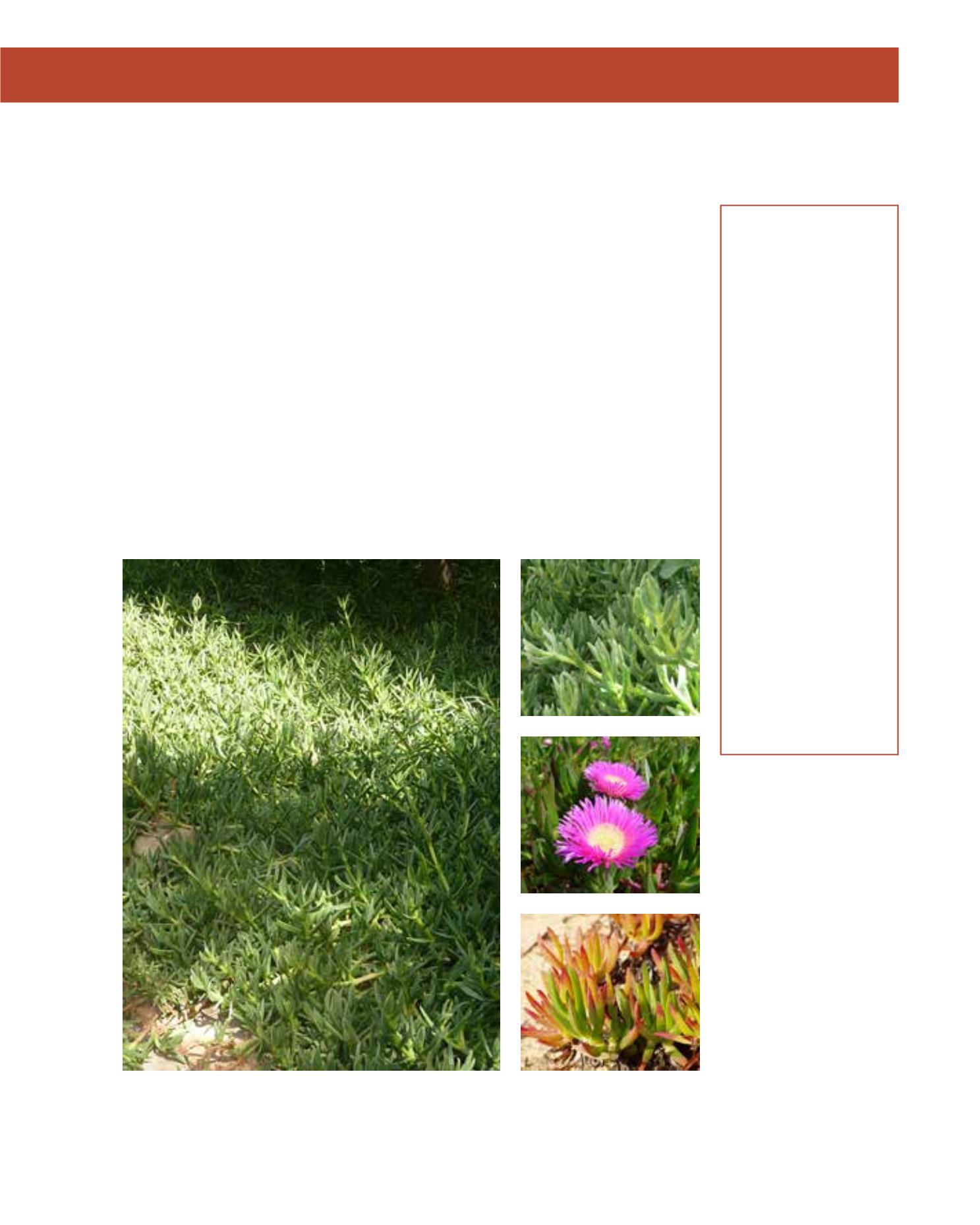

GENERAL
Origin
:
Mediterranean
Vigour
:
fast growing
Humidity
:
semi-arid, semi-
humid, very
humid
Propagation :
sowing and
pricking out,
cuttings
Maintenance :
moderate
CONDITIONS
Urban climate :
resistant
Dessication :
resistant
Stagnant water :
vulnerable
Irrigation
:
low
Salinity/ppm :
very high (8000
ppm)
Hardiness
:
0°C
SHAPE
Type
:
cacti, succulents
Height
:
0.15 m-0.2 m
Spread
:
2 m-4 m
Foliage
:
evergreen
FLOWER
Colour
:
yellow, pink, light
yellow
Period
:
March - June
FRUIT
Type of fruit :
capsule
Fruit size
:
2 cm
Toxicity
:
edible when
processed, fruit
The Hottentot Fig, or hay alam in Arabic, grows wild in South Africa. It is a coarse-textured, vigo-
rously spreading groundcover with bold, succulent leaves. They are triangular in section, curved
and up to 12 cm long. Creamy or yellow flowers appear in spring and may be seen until summer.
Carpobrotus edulis var. rubescens has pink flowers that resemble those of the Red Hottentot Fig.
The edible fruits are not at all as tasty as true figs (Ficus carica). Hottentot Figs expand quickly
when the woody branches root wherever they touch ground. It fits in well in rock gardens, but
may also be used as a ground cover next to a pool or along roads. Soils should be sandy with good
drainage. Full sun is essential for healthy plants and profuse flowering. Supplemental watering is
needed in summer, while heat and low temperatures are tolerated. The plants sometimes become
bare when old, and must be discarded to prevent an unsightly appearance. Alternatively, cuttings
may be placed wherever bare spots show up. In order to quickly cover a new area, the plants
should be spaced about 40 cm apart. The fleshy foliage should never be stepped on. Cutting it
back entirely usually results in the loss of the plant. In spring, seeds may be sown in warm, moist
conditions. Much faster is propagation by stem cuttings that should be allowed to dry before pla-
cing them in compost. The latter method is most successful in late summer. Invasions are to be
expected on disturbed sites only. Suffers from fungus disease if overwatered.
86
Carpobrotus edulis,
Aizoaceae
Yellow Hottentot Fig,
hay alam
















